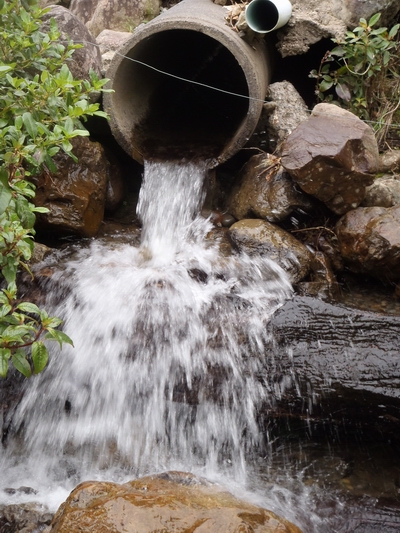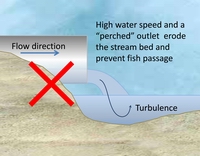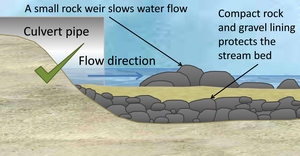Tips for fish-friendly culverts
Reducing water speed
Fast-moving water will prevent fish swimming upstream through a culvert. You can slow down the water speed by:
- Choosing a stable site with a minimum stream bed slope.
- Attaching objects such as rocks or small concrete blocks to the culvert bed. These increase the culvert's roughness, which can reduce water speed and provide resting areas for fish. Make sure the objects won't cause the culvert to become blocked by debris during floods).
- Placing a rock ramp below the culvert (see the Rock ramps section of these guidelines).
Preventing erosion
Erosion of stream banks and stream beds can happen around culvert inlets and outlets.
Channel scour can result in hanging outlets – one of the most common barriers for fish in small streams.
To avoid hanging outlets and other erosion problems:
- Make sure your culvert is at least as wide as the stream bed during normal flows.
- If erosion is likely, protect the stream banks and bed around both the inlet and outlet with rocks or other suitable material. A rock ramp placed below a culvert can also help prevent erosion.
 Erosion can create hanging culverts – fish can't migrate up these. (Photo: Horizons Regional Council).
Erosion can create hanging culverts – fish can't migrate up these. (Photo: Horizons Regional Council).
Fixing hanging culverts
The outlet of an existing culvert can be altered to make it fish-friendly, as shown in the diagrams below.
Pre-fabricated fish ladders are also commercially available.


